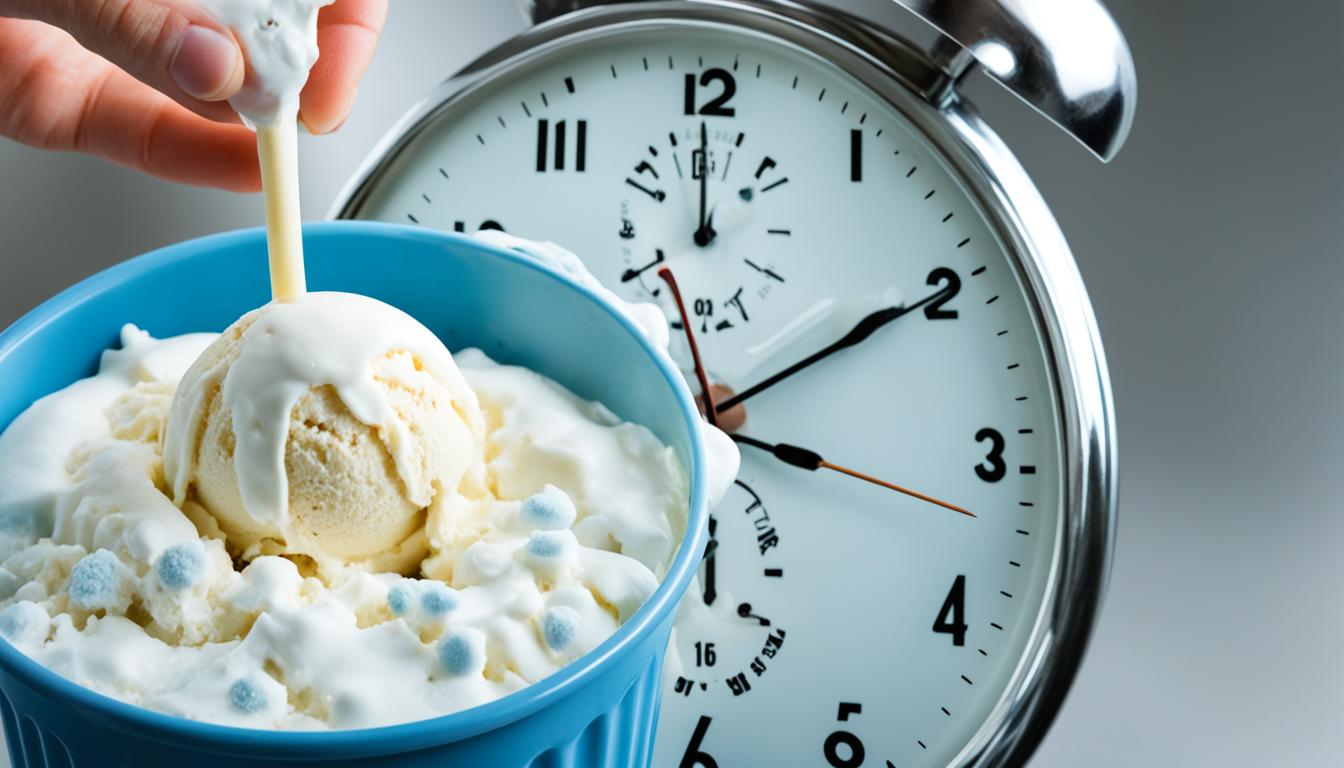When it comes to making the perfect homemade ice cream, there are countless recipes and techniques to consider. One common step that often raises eyebrows is aging the ice cream base overnight. But is this really necessary, or is it just a myth?
Many pastry chefs swear by the practice of chilling the base before churning it, claiming that it leads to a creamier texture and enhanced flavor in the final product. But is there scientific evidence to back up these claims? And what if you’re short on time and can’t wait for the base to age overnight?
In this article, we aim to uncover the truth about aging ice cream base. We’ll delve into the science behind this technique, examining how it affects the texture and flavor of the ice cream. We’ll also share the results of taste tests conducted with ice creams aged for varying durations, revealing whether there’s a noticeable difference between ice creams aged overnight and those aged for shorter periods of time.
So, if you’ve ever wondered if you really need to age your ice cream base overnight, or if there’s a shortcut that offers the same results, join us as we explore the science and taste behind this controversial topic. Get ready to challenge common beliefs and discover the truth about aging ice cream base.
The Science Behind Aging Ice Cream Base
When it comes to creating the perfect ice cream, aging the base can make a significant impact on its texture and overall quality. The process of aging ice cream base involves allowing it to rest in the refrigerator for a specific duration before churning. This step is believed to enhance the creaminess and flavor of the final product.
The benefits of aging ice cream base can be attributed to the scientific principles behind the process. During the aging period, fat droplets in the dairy components, such as milk and cream, have the opportunity to bind with the emulsifiers found in the egg yolks. This binding process forms crystals, which contribute to a smooth and creamy texture in the ice cream.
Aging the ice cream base also aids in the stabilization of air cells within the mixture. The low temperatures during the aging period help create a semi-continuous network of fat throughout the ice cream, giving it resistance to melting. This results in a more stable and slower melting ice cream, allowing for a more enjoyable eating experience.
However, it is important to note that the scientific evidence supporting these claims is still limited. Some argue that the difference in texture achieved through aging may not be noticeable for home cooks who are using regular equipment. Additionally, the duration for aging ice cream base can vary depending on the recipe being followed.
Typically, it is recommended to age the ice cream base for a minimum of a few hours, but many recipes suggest aging it overnight for optimal results. The duration will depend on the specific ingredients and flavor profile desired.
While there may be varying opinions on the necessity of aging ice cream base, it remains a technique used by professionals and enthusiasts alike. Those dedicated to achieving the creamiest and most flavorful ice cream may find value in the process. Ultimately, the decision to age ice cream base comes down to personal preference and experimentation.
Image: Aging Ice Cream Base
The Results of Taste Testing
To determine the impact of overnight aging ice cream base on flavor and texture, we conducted a taste test using different batches of ice cream aged for various durations. The results of the test showed that there was no clear correlation between aging time and the taste and texture of the ice cream. Our panelists found it challenging to distinguish between ice creams aged for different lengths of time. In fact, some ice creams that were chilled for just a few hours produced similar results to those aged overnight.
These findings suggest that aging the ice cream base overnight is not a necessary step for achieving a delicious and creamy ice cream. While there may be benefits to aging, such as allowing flavors to intensify and providing an opportunity for adjustments, it ultimately comes down to personal preference. If you’re short on time or simply don’t want to wait overnight, you can still create a great-tasting ice cream by chilling the base until it’s cold enough to churn.
So, do you have to age ice cream base? The answer is no. Aging ice cream base overnight is not essential for achieving a fantastic ice cream. While it might enhance certain aspects of the ice cream, the difference in flavor and texture may not be noticeable to most people. Feel free to experiment with aging the base for different durations to find what works best for you. After all, making ice cream should be a fun and delicious experience!
